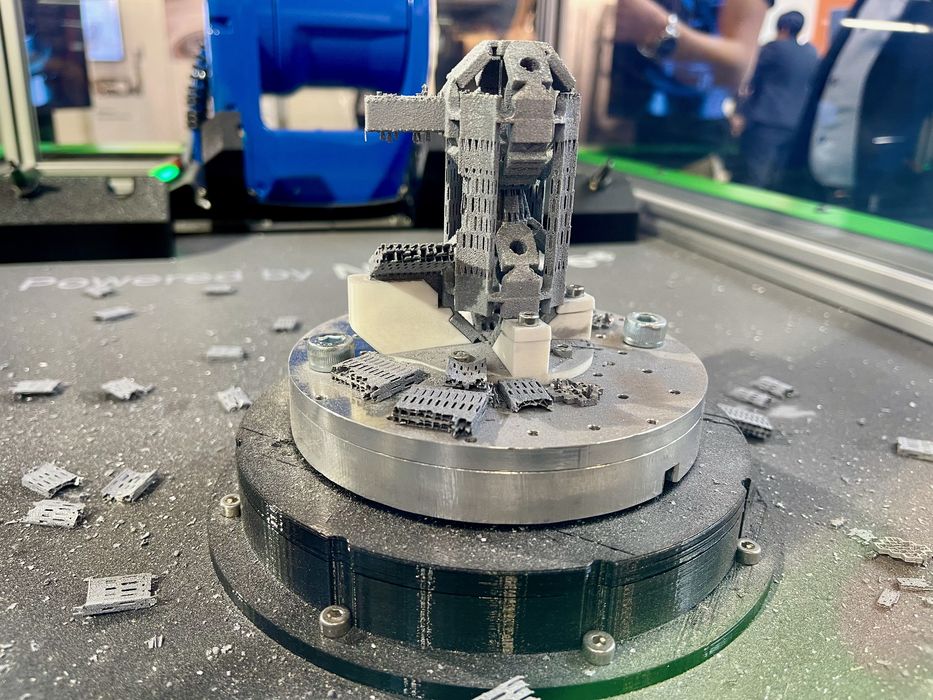
Rivelin Robotics showed their amazing metal 3D print post processing station to us last week.
Rivelin Robotics only recently revealed their project, and it is perhaps a unique approach. It’s also one that’s desperately needed in the metal 3D print industry.
The problem they are solving is the issue of metal post processing. When a metal 3D print completes, we have a print solidly fused to the metal build plate, along with support structures and rough surfaces that need smoothing.
Those problems are easily dealt with: just pick up some cutting and smoothing tools and go to work. This is how most metal 3D prints are post processed today: manually.
But that’s not going to cut it as manufacturers increasingly turn to additive approaches for making larger quantities of metal parts. The problem is that as part volumes soar, so does the need for skilled manual workers to post process those parts.
In addition, manual post processing is also a less consistent approach, since individual workers may perform the finishing in slightly different fashions. These variations could be unacceptable for some applications.
The best idea is to automate the entire post processing step so that it can become consistent and reliable. That’s what Rivelin Robotics is doing with their NetShape Robots.
The process by which this works is quite incredible. The robot first does a 3D scan of the part that’s been placed in the chamber, which can then be “snapped” to the corresponding CAD model. This enables the machine to understand the orientation of the print.
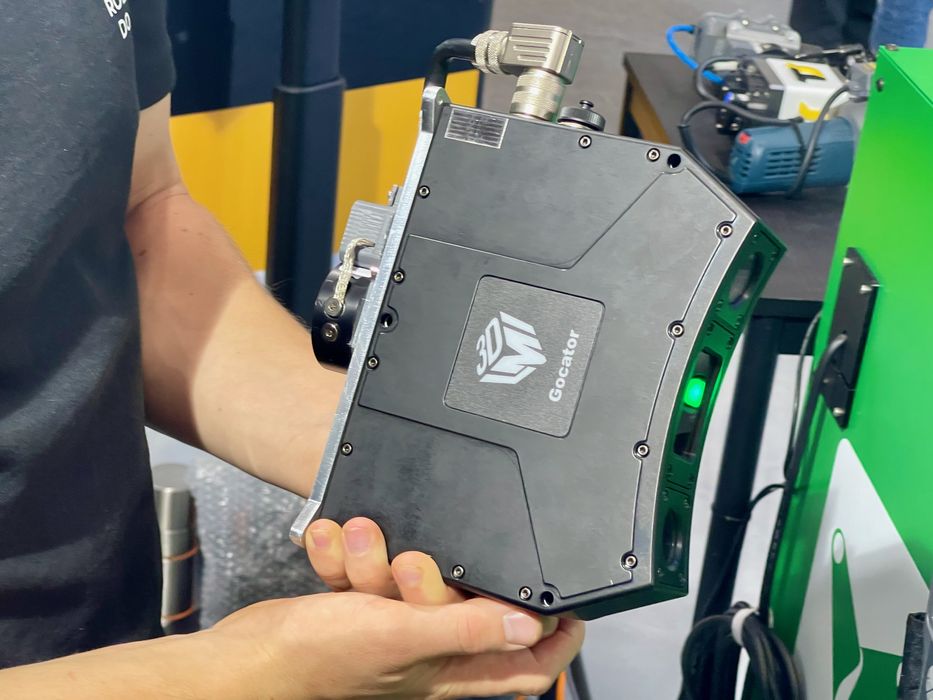
The scanner used by NetShape Robots is a structured light device, and its data can be used to also detect deformations. The software can also automatically stitch scans from large parts together.
The support material is identified, and then the robot is able to remove them without damaging the part. Throughout the process, the machine continually updates its surface map of the part in progress.
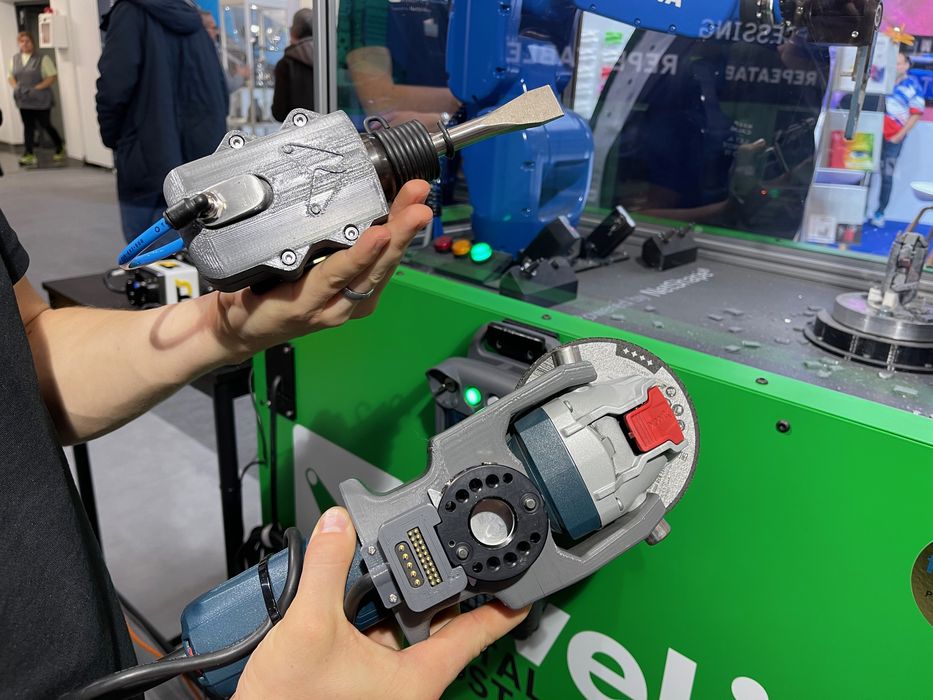
The machine is also capable of swapping tools. There are several that can be used, including cutting and grinding tools. It’s likely possible even more tools could be added in the future.
The secret to this system is in the software. Robots and grinding tools are well understood technologies, but here the NetShape software is used to control the equipment with arbitrarily complex metal 3D prints.
Post processing may sound straightforward, but it turns out there are plenty of complexities to handle. The system must handle deformations, errors, areas requiring “extra” material, and so on. This results in the operator preparing a “recipe” for a given job that’s based on a default configuration.
It also turns out that data from successful jobs is collected and analyzed by Rivelin Robotics’ AI to refine recipes for future use.
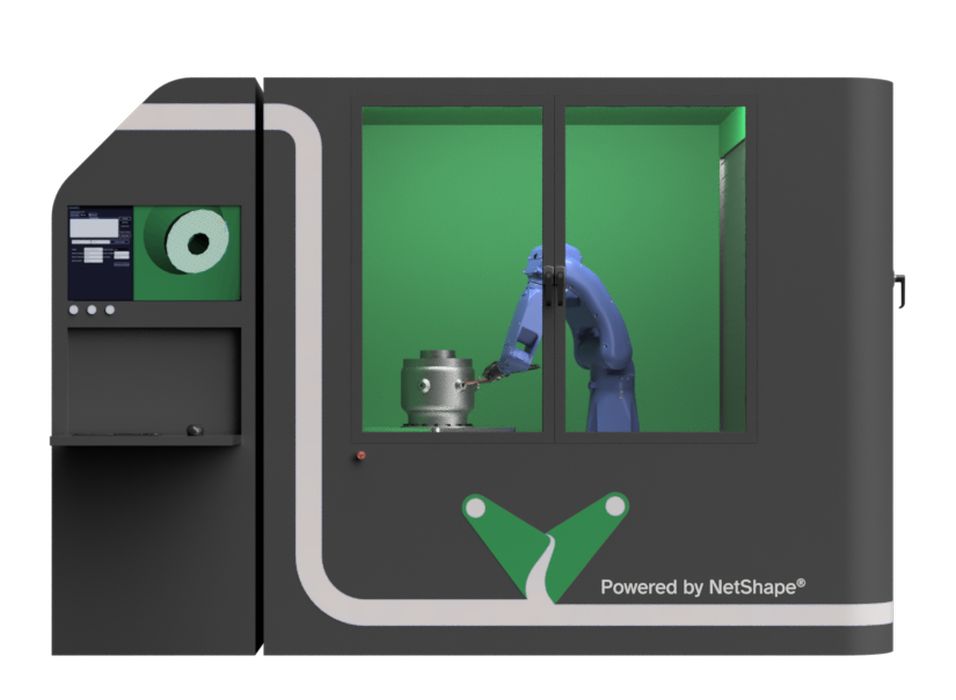
The company offers this technology in a variety of packages, ranging from the “prototype-level” NS-0, all the way up to the massive NS-1, which is billed as “factory production”. This version can apparently handle parts weighing up to 1500kg.
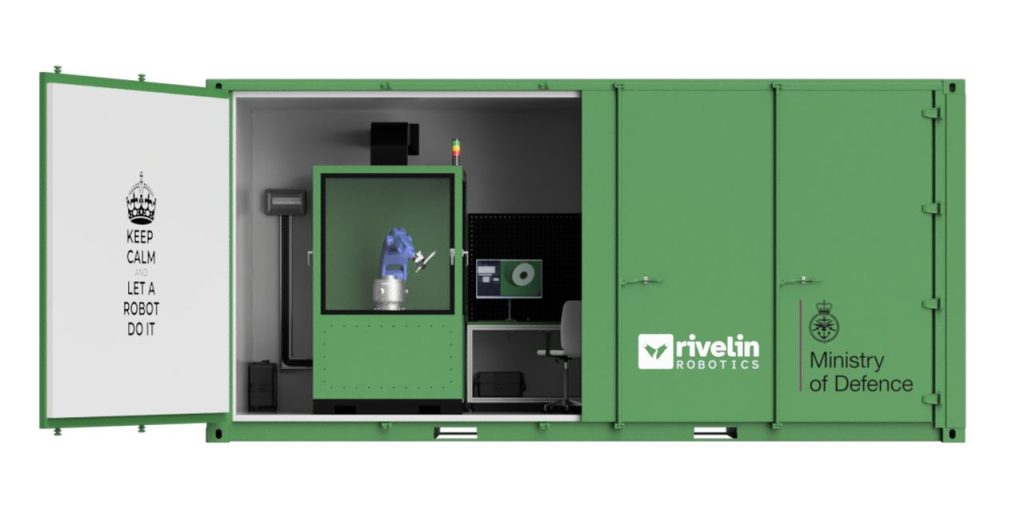
There’s also a shipping container version, the NS-2, which offers “in-field production”, likely for military use.
Rivelin Robotics has taken on a big challenge here, as there doesn’t seem to be other solutions with this much automation for post processing metal 3D prints. If they succeed, it is possible they could sell an enormous number of these devices, basically matching the sales of metal 3D printers: if you print, you must post process.
Via Rivelin Robotics
